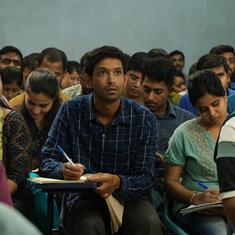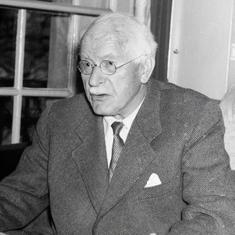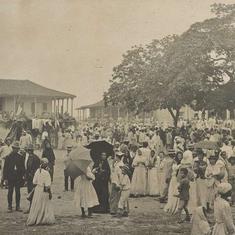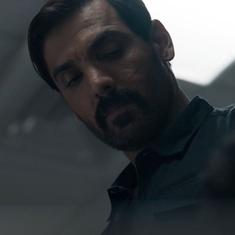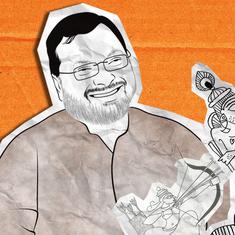It is ten years since architect Charles Correa passed away on June 16, 2015, at the age of 84.
The day after he died, The Indian Express carried a front page photograph of the Champalimaud Centre for the Unknown, a major medical and research institute in Lisbon. Although this iconic building was designed by Correa, the article was not a recognition of his passing.
The picture was featured in the context of controversial businessman Lalit Modi’s visit to his wife who was undergoing treatment for cancer at the Champalimaud Centre. Correa’s obituary was buried in the folds of the paper.
The disjunct was jarring. Therein lay the tragedy of Charles Correa and his work. He lived ahead of his time.
His work cried out to be understood, shared and celebrated. Yet the very same Madhya Pradesh Assembly building in Bhopal that won him the Aga Khan Award for Excellence in Architecture was sought to be altered by the legislators who used it. They were convinced that it did not comply with vaastu principles and attributed the deaths of some of their colleagues to ill luck due to the building design.
Likewise, Jeevan Bharati towers in New Delhi was envisioned as a grand public space at varied levels linking the surrounding avenues to the inner reaches of Connaught Place by spanning a skywalk over the Outer Circle. The project was not completed as envisaged.
It strongly exhibits how modern architecture can stand out within colonial surrounding without being gauche. The Jeevan Bharati Building/ Charles Correa#architect #KHS #design #interiordesign #photography#architecturelovers #architecturephotography #travel #interior #Building pic.twitter.com/CISf66r2Z7
— Ar. Hrishikesh Shetty 🇮🇳 (@kalmanje_hrishi) November 15, 2021
Correa was educated in the US but his work revealed a deep understanding of space as traditionally built and used in India. This generated pride and vigour in an entire generation of Indian architects. A journey that started with the Gandhi Sanghralaya at Sabarmati (1958-1963), a structure that complimented without distracting from the Mahatma’s ashram continued through the decades to the delightful Jawahar Kala Kendra in Jaipur (1986-1992). The nine disparate squares of this cultural centre are a celebration of space, colour and surprise in a vigourously Indian idiom.
Correa’s work and his writings in the realm of mass-housing are not merely an exercise in addressing numerical concerns but have a humane dimension. The Belapur Artists’ village in Navi Mumbai (1983-1986), a low-rise development designed on a flexible template, provided for incremental additions by the home owners.
At the other end of the spectrum, luxury was redefined via the “terraces in the sky” he created in Kanchenjunga (1983), South Mumbai’s landmark apartment destination for the affluent. Correa’s responses in these projects were in consonance with his conviction that the rich could afford verticality in increasingly dense urban situations.
Climatic and environmental considerations figured prominently in Correa’s buildings. Be it the “tube house” in Ahmedabad designed to facilitate air movement within the dwelling unit or the beach resort at Kovalam that merged with the incline of the site, his was an architecture that acknowledged the conditions it was borne of. Each of these buildings took the discussion beyond the basics.
Tube house.
— Rubén Parz (@rubenparz) May 5, 2018
Charles Correa.#arquitectura #architecture #vivienda pic.twitter.com/iSsXBuyxOk
Belonging to a post-Independence generation of architects, Correa and many of his peers concerned themselves with an architectural identity for a freshly created nation. Decades earlier in the United States, Frank Lloyd Wright had attempted an architecture bereft of Eurocentric leanings. Wright drew from native American interpretations and the glorious wilderness his country is famed for. His efforts competed with an industrial America’s growing urbanism. Today, America is identified more with the steel and glass skyscrapers it popularised. In a popular idiom, this facet of urbanism would foremost lay claim to an ‘Americanism’.
Correa and contemporaries like Achyut Kanvinde, Balkrishna Doshi and Raj Rewal contributed little to the frenzied construction of the post-liberalisation era that expanded city limits countrywide. It remains to be seen whether the “Indianism” they worked towards will be the country’s intrinsic architectural vocabulary or whether it will be the “Americanism” that has since spread like a global affliction.
What has further marginalised the architecture of Correa’s era are recent demolitions of significant works from that period. At least two of his buildings are slated for redevelopment and incongruous additions have irrevocably altered the character of two iconic resort hotels he had designed.
At a time when merchant-princes in India, builders and businessmen alike, have been falling over each other to hire foreign architects, Correa in his last years was working in global locales including Boston, Toronto and Lisbon.
His life came full circle when he designed a landmark building in the McGovern Institute for Brain Research in his alma mater, the Massachusetts Institute of Technology. India, though, may take a little longer to identify the Champalimaud Centre for the Unknown for more than a tryst with Lalit Modi.
Rajesh Luthra is an architect in independent practice in New Delhi. He graduated from Columbia University in New York City and has worked at Charles Correa Associates in Bombay, since Mumbai.

